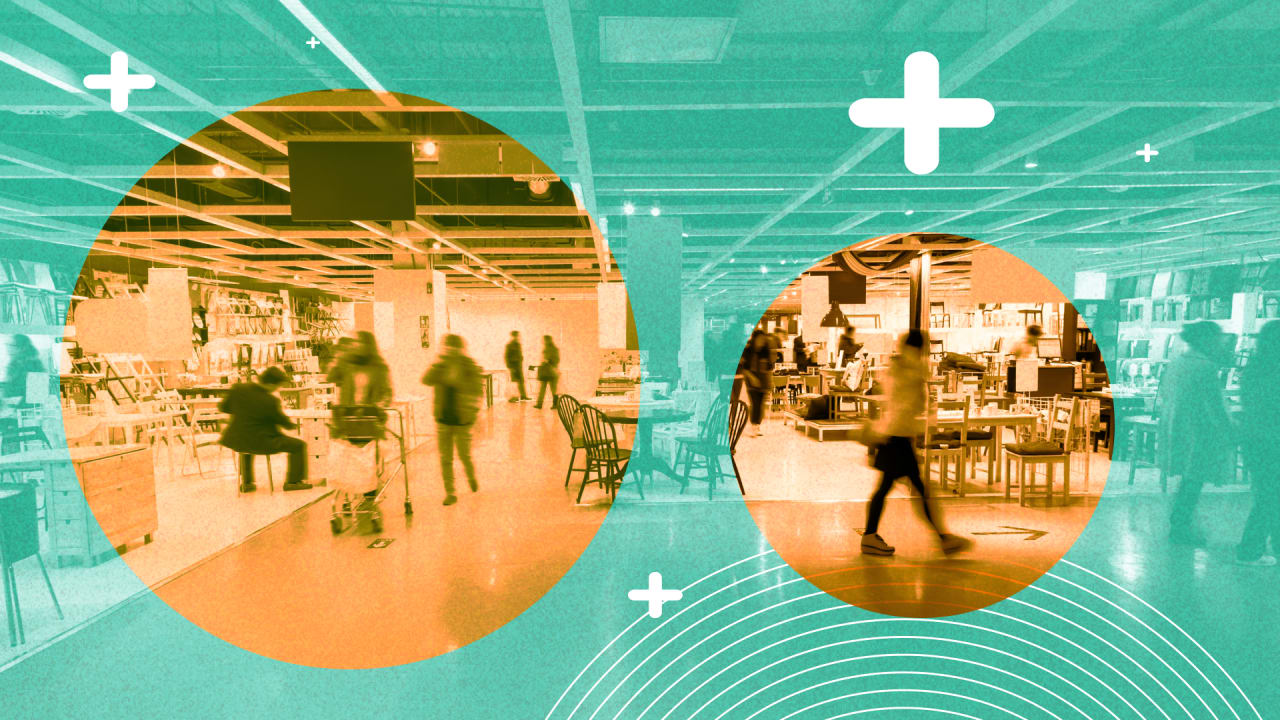Four predictions for the future of brick and mortar in 2022

[ad_1]

Innovative retailers act on informed predictions, even when competitors don’t. From Wanamaker’s bet on the department store model to Apple’s stylish, self-contained computers, history is ruled by retailers that dared to be different. The greatest retail innovators don’t do things differently just to stand out—they recognize taste changes or voids in the market, and they act quickly to provide a solution.
With that in mind, it’s worth predicting which trends will pay off big for bold retailers in the coming months.
THE STATE OF BRICK AND MORTAR TODAY
Rather than cripple the brick-and-mortar retail sector (as many predicted), the uncertainty of the past two years has seemingly whetted consumers’ desire for in-store experiences. Though many retailers have faced significant hardship—with many closing their doors for good—we’ve seen resilient demand for in-store experiences.
In the face of unprecedented supply chain disruptions, continued lockdowns, and rising prices, brick-and-mortar retail sales rose throughout most of 2021—against all odds. We take this data to support what we have known for decades: E-commerce, for all its benefits, is fundamentally different from in-store and in-restaurant experiences. Customers from all walks of life still crave in-location experiences, pandemic or no pandemic.
This is good news for brick and mortar, but hardly the end of the story.
For individual retailers, there remains fierce competition for dollars and loyalty. The last two years kickstarted several enduring trends, prompting brick-and-mortar retailers to expand their omnichannel presence and shopping options. Curbside pickup, buy online, pickup in store (BOPIS), and self-checkout exploded as retailers sought to accommodate every customer.
Such trends will continue, but have become well-known. Now, retailers must act on more nascent trends, embracing these common-sense predictions that will shape retail in 2022 and beyond.
5 PREDICTIONS ABOUT HOW BRICK AND MORTAR WILL EVOLVE THIS YEAR
• Prediction 1: Retailers accept more types of payment.
Retailers may be reticent to adopt new payment methods over fears about implementation, training, and fee-derived expenses. Increasingly sophisticated payment channels—including POS systems and digital payment services—are reducing the cost of accepting more types of payment.
You don’t necessarily have to accept Bitcoin, like Whole Foods and Starbucks do. If you want to appeal to the greatest number of customers, though, consider expanding your accepted forms of payment.
• Prediction 2: Should inflation continue (or not), those that deliver hyper-personalized experiences will thrive.
Every retailer should be encouraged by American shoppers’ willingness to pay more despite a higher cost of goods. They must also understand that higher prices lead most shoppers to become more discerning. Value-conscious American consumers will migrate toward retailers that give them more bang for their buck in 2022. They’ll embrace stores that not only deliver a product but also a first-class, personalized shopping experience.
Brands like Neiman Marcus, L.L. Bean, and Chick-fil-A are built to thrive in an inflationary market. Their renowned customer service reputations assure buyers that, even if chaos abounds, they’ll be treated like they’re special.
• Prediction 3: Customers demand, and get, better omnichannel experiences.
Omnichannel retail isn’t going anywhere. The in-store-online convergence will only become more seamless. Many retailers mastered the art of BOPIS in 2020 and 2021, and will continue to expand on those efforts. They’ll whittle away at fulfillment times, streamline return-online, drop-off in-store processes, and further shrink the gap between their online channels and in-store experiences.
• Prediction 4: “Phygital” retail experiences will become the norm.
The “phygital” movement implores retailers to view all of their channels as a single organism. Rather than opposing or distinct forces, phygital retail experiences use digital means to enhance the in-store experience, and vice versa.
When shoppers use a mobile coupon in-store or scan a QR code to learn more about the product in front of them, they’re engaging in phygital shopping experiences. Because phygital engagement provides valuable insights about the customer and enhances the shopping experience, these hybrid experiences will become increasingly prevalent in 2022.
5 ACTIONABLE TIPS FOR RETAILERS IN 2022
• Tip 1: Continue to refine and rejuvenate the in-location experience. As customers feel the weight of inflation, they’ll seek memorable experiences just as much as quality products.
• Tip 2: Use AI to track the in-location customer journey and provide an even better experience. AI does two jobs at once, personalizing retail journeys while providing retailers invaluable data about consumer needs.
• Tip 3: Digital-only acquisition strategies won’t cut it. Deploy a varied approach for customer acquisition, including but not limited to robust in-store marketing.
• Tip 4: Store associates will become a significant competitive advantage. Perhaps paradoxically, the effectiveness of your human associates will be key to success even as stores become increasingly digital. Retail workers today report facing numerous challenges, resulting in burnout and attrition. Customers will notice the stores that maintain well-trained, good-natured, and motivated sales associates.
• Tip 5: Give customers a personal reason to visit your stores. With more ways to shop than ever before, customers don’t need to actually go to the store. Those who prefer shopping in-store seek unique, comforting, and personal experiences.
CONCLUSION
Everything moves faster these days, including trends in retail. What works today may not in a few months, requiring retailers to embrace constant innovation.
Many long-lasting retailers closed large swaths of stores in 2021, with Bed, Bath & Beyond, Kmart, and Macy’s among the casualties. Such closures are never good to see, but they serve as reminders of the essential nature of adaptation in the retail space. If you’re not trying new things and embracing change, you’re losing ground.
Remember this as you chart your organization’s path in the coming months.
CEO of Raydiant, a digital signage and in-store experience solutions provider.
[ad_2]
Source link





